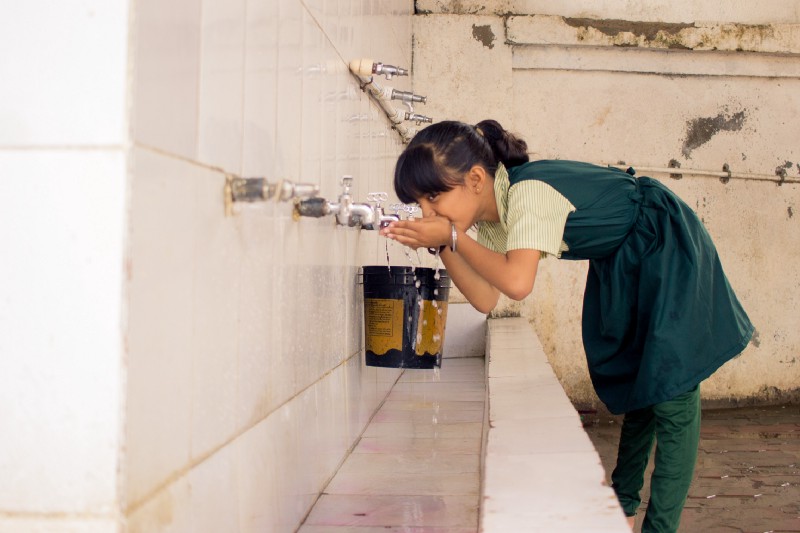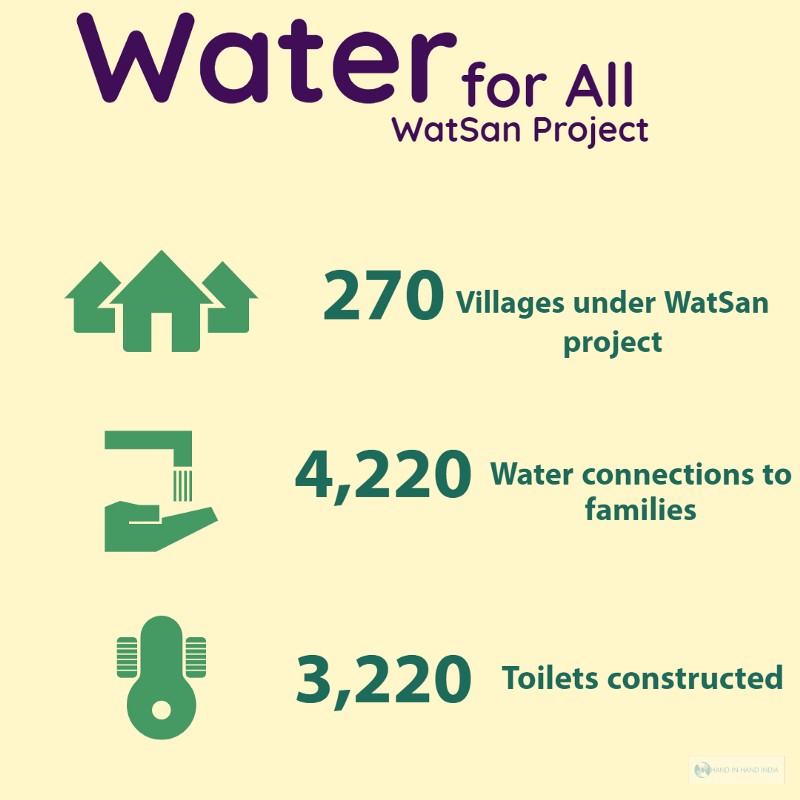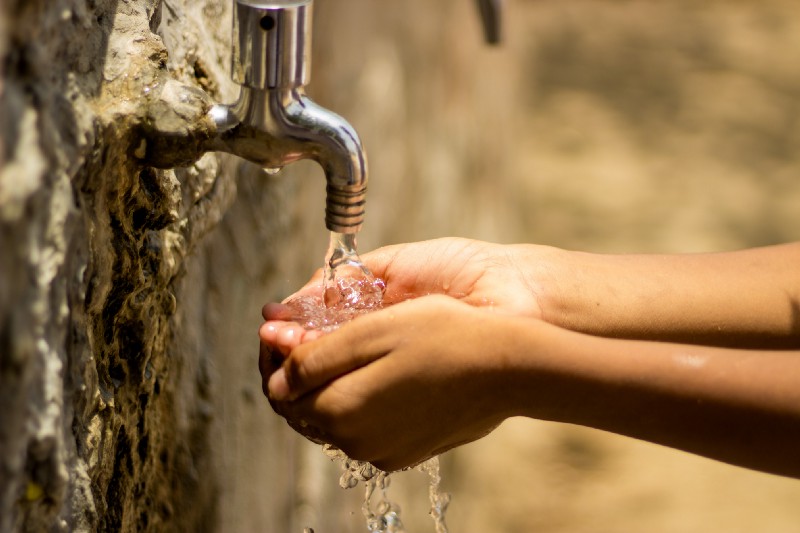Safe drinking water and toilets. Something that most of us living in the cities take for granted. For someone from rural India, however, toilets and water are a luxury. This Water Week, we take a look back and bring you the story of a game-changing project that transformed rural lives.
We take you back to 2009, in a village near Kancheepuram, Tamil Nadu. It’s past 10 pm, a dark, moonless night. Sandhya, a nine-year-old from the village is taking a walk, like many others in her village do. They don’t have toilets at home and the open fields are where they head to for a night-time emergency. This night though, Sandhya did not return home. Her parents discover her in the morning, unconscious after tripping over an electric wire.
The incident shook Sandhya’s parents, and other villagers. The extent of the downsides of not having water and sanitation facilities hit them.
WatSan: Bringing dignity to lives

A United Nations study mentioned that mobiles were far more accessible than toilets in rural India. To change this scenario, the WatSan project was launched in December 2008 in partnership with Water.Org, with the primary aim of providing access to water and sanitation to rural Indian households. The objective of the project was to change the behaviour of rural Tamil Nadu towards safe drinking water and sanitation and providing them with hygiene training. With credit support and infrastructure creation in the forms of water tap connections and toilet constructions, WatSan aimed to change the water and sanitation scene in rural areas.
With our existing network of Self Help Group women, we were able to forge larger partnerships with different stakeholders in the community.
While Government systems are designed to cover the poor sections of society, last mile delivery is often a challenge. WatSan supplemented the Government programmes through planning, implementation and rural outreach of the schemes, widening the scope of the public health system.
Our scoping study in 150 villages around Kancheepuram found many surprising results. Questionable potability of water and high levels of water-borne diseases were just some of the notable factors found. Household water connections were a rarity too! Children like Sandhya often had to help parents to fetch water from far away, giving up a day at school. Women would spend a large part of their day collecting, storing and doing their chores. Their contribution to the family’s income was next to nothing.
The primary stage of the WatSan project consisted of mobilising and creating awareness in the community. The second stage was introducing Water Credit Initiatives; loans that were issued to the local community to buy water taps and/or constructing toilets. Renovation of existing toilets was also funded. Loans were also used to legalize the water connections through water tax payment.
The WatSan reach
270 villages in different districts of Tamil Nadu were covered by the WatSan project. Here’s how we went about with the project.
Who?
A significant fact was that the people who benefited from this project live in rural and periurban areas, and more importantly, are first-generation beneficiaries getting access to water and sanitation — like toilets in their homes and water tap connection in their backyard. Women from SHGs were the primary audience, as they were the ones who managed household water supply and usage. School children were a close second and were taught concepts through games and puppet shows.
What?
Here are the different areas we communicated about through the WatSan project:
- Consequences of open defecation
- Waterborne diseases and how they spread
- Proper use of water and sanitation systems
- Reducing misuse and wastage of water
- Water and sanitation aspects among school children
How?
We used differed vehicles to spread the word: house visits by our staff, vernacular language posters, puppet shows and street theatre.
The WatSan Difference
The numbers at the end of the WatSan project were satisfying indeed. Sandhya’s family led the movement in getting their toilet constructed. The project had reached more than 23,240 people in terms of water issues and 16,874 for sanitation issues. More than 4,220 water connections were given to families in these villages. More than 3,220 individual toilet constructions were facilitated for households.

The HiH WatSan programme’s impact on the developmental indicators covered areas such as health and hygiene. The project showed high impact in these areas; better water and sanitation facilities have meant reduced instances of diseases. This, in turn, has resulted in reduced morbidity, mortality and improved nutrition status. Moreover, providing water and sanitation facilities have resulted in women being more productive, adding to family income! They have also found time to earn additional income or sometimes sell surplus water and increase household income levels.

WatSan continues
While the WatSan project did come to an end in 2011, our work with water and sanitation has not stopped.
Over our 15 year existence, we have reached out to more than 50,000 rural population creating awareness and imparting training, particularly in the water and sanitation area. Facilitating 13962 toilet constructions have helped us create nine Open-Defecation-Free villages.
We work with schools, telling children about the importance of washing hands and using toilets. In the area of water conservation, our Natural Resource Management team works with farmers in reviving traditional water sources. The Killai Canal Project is one that is close to our hearts.

Hand in Hand India’s Healthcare intervention aims to bring access to healthcare across rural India. Our model works by partnering with district authorities and bridging gaps in the Government’s healthcare network. Through our initiatives of medical camps, sanitation and hygiene management, maternal and child healthcare, we have reached out to more than 20 lakh families across India. Read more about our work here.






